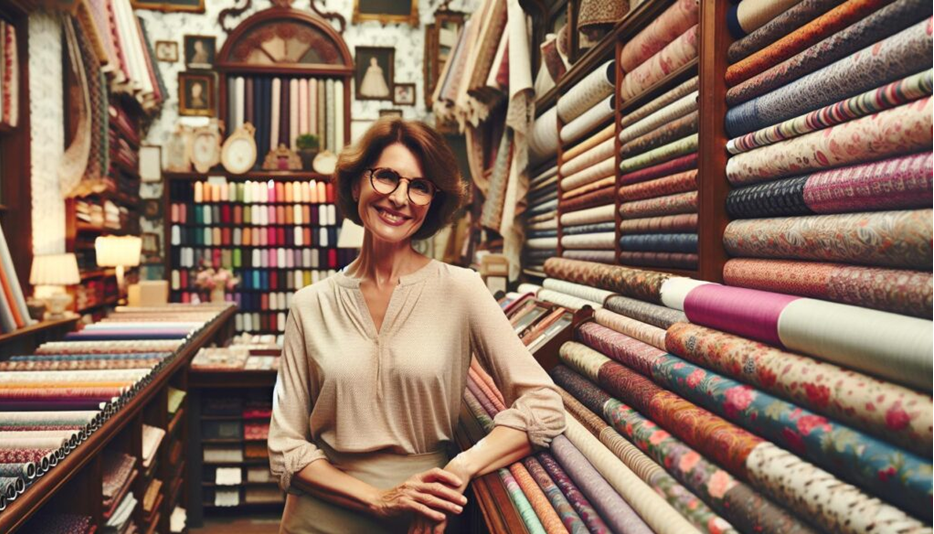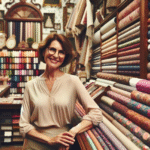- Introduction
For small businesses and startups in the fashion, upholstery, or craft industries, finding the right wholesale fabric supplier can make or break your success. Bulk fabric purchasing not only lowers production costs but also ensures a consistent supply of quality materials for your designs.
In 2025, the wholesale textile industry has evolved significantly — digital marketplaces, sustainable sourcing, and global supply chains now make it easier for small businesses to access premium-quality fabrics at competitive rates. This guide will walk you through everything you need to know about sourcing wholesale fabric, identifying reliable suppliers, and making smart buying decisions that support your brand’s growth.
- Understanding Wholesale Fabric
Before diving into the buying process, it’s essential to understand what wholesale fabric really means.
Wholesale fabric refers to textiles sold in bulk directly from manufacturers, mills, or distributors, usually at discounted rates compared to retail prices. The main difference between wholesale and retail purchasing lies in quantity and pricing — wholesalers sell large volumes with lower per-unit costs, while retail stores cater to smaller, individual buyers.
Benefits of Buying Wholesale Fabric
- Cost Savings: Lower prices per yard or meter compared to retail.
- Consistency: Uniform quality across large orders.
- Customization: Many suppliers offer custom dyeing, printing, or weaving for bulk buyers.
- Scalability: Perfect for startups aiming to scale production efficiently.
For new businesses, sourcing wholesale fabric can help maintain healthy profit margins and enable faster growth in a competitive market.
- Types of Wholesale Fabrics
The variety of wholesale fabrics available today is vast — from natural fibers to sustainable blends. Here’s a quick overview of the main types to consider:
- Natural Fabrics
- Cotton: Breathable, affordable, and ideal for apparel and home décor.
- Linen: Lightweight and durable, perfect for summer clothing and interiors.
- Silk: Luxurious, soft, and used in high-end garments.
- Wool: Warm and long-lasting, best for winter wear and upholstery.
- .Synthetic Fabrics
- Polyester: Durable, wrinkle-resistant, and cost-effective.
- Nylon: Strong and elastic, commonly used in sportswear.
- Spandex: Stretchable and ideal for activewear or dancewear.
- Blended and Specialty Fabrics
Combining different fibers creates versatile materials like poly-cotton or wool-silk blends — offering both performance and comfort.
- Eco-Friendly Fabrics
With growing environmental awareness, wholesale fabric suppliers now offer sustainable options such as:
- Organic Cotton (grown without harmful chemicals)
- Tencel (Lyocell) (biodegradable and soft)
- Recycled Polyester (made from plastic bottles)
These materials are not just eco-friendly but also appeal to conscious consumers — giving your brand a competitive edge.
- How to Identify Quality in Wholesale Fabric
Buying in bulk means you’re investing in hundreds of meters of material — so quality matters.
Key Quality Checks:
- Fabric Weight and Weave:
Heavier fabrics tend to be more durable, while lighter weaves suit airy garments. - Texture and Feel:
Softness and flexibility often indicate better quality. - Colorfastness:
Test whether the dye bleeds when washed or rubbed. - GSM (Grams per Square Meter):
This measurement determines fabric density and durability. - Thread Count:
Higher thread counts usually indicate tighter weaves and longer lifespan.
Tip:
Always request fabric samples before placing bulk orders to assess texture, color, and finish in person.
- Finding Reliable Wholesale Fabric Suppliers
Selecting the right wholesale fabric supplier is crucial for ensuring consistent quality and timely delivery.
Where to Find Suppliers:
- Local Markets: Dubai Textile Souk, Surat Textile Market (India), Guangzhou Fabric Market (China).
- Online Platforms: Alibaba, Fabric.com, TextileWorld.com, or independent supplier websites.
- Trade Shows: Events like Texworld Paris or Intertextile Shanghai help connect you directly with verified manufacturers.
How to Vet a Supplier:
- Check Reviews and Testimonials.
- Verify Business Licenses and Certifications.
- Ask About MOQs (Minimum Order Quantities).
- Request Product Catalogs and Fabric Samples.
- Evaluate Communication and Response Time.
Building strong relationships with wholesale fabric suppliers can lead to discounts, priority production, and better credit terms over time.
- Negotiating with Wholesale Fabric Vendors
Negotiation is an art that can save your startup significant money.
Tips for Negotiating:
- Compare Prices: Always get quotes from multiple suppliers.
- Discuss Minimum Order Quantities: Some suppliers allow smaller test orders.
- Negotiate Payment Terms:Opt for 30/70 (deposit/balance) or credit terms if possible.
- Ask for Discounts: Larger or recurring orders often qualify for better rates.
- Clarify Shipping Costs: Ensure pricing includes transport and customs if importing.
Pro Tip:
Polite, professional communication builds long-term trust — vendors are more likely to offer flexible deals to buyers they value.
- Online vs. Offline Fabric Buying
With the rise of e-commerce, startups can now source wholesale fabric globally without leaving their offices. However, each method has its advantages and challenges.
Online Buying
Pros:
- Access to thousands of suppliers globally
- Price transparency and easy comparisons
- Convenience and time-saving
Cons:
- Inability to feel fabric texture
- Potential shipping delays or hidden fees
- Risk of receiving low-quality goods
Offline Buying
Pros:
- Touch and test fabric before purchase
- Personal relationship building
- Immediate sampling and feedback
Cons:
- Limited local variety
- Requires travel and logistics planning
Best Approach:
Start online to research suppliers, then visit trade fairs or local distributors for hands-on evaluation before committing to bulk orders.
- Budgeting and Cost Management
Managing costs effectively is vital for small businesses.
Budgeting Steps:
- Calculate True Cost:
Include fabric price, shipping, customs, and storage fees. - Monitor Exchange Rates:
If importing, currency fluctuations can affect pricing. - Order in Batches:
Avoid overstocking — materials can get damaged or outdated. - Track Waste:
Optimize cutting and production to minimize fabric waste.
Using wholesale fabric efficiently improves profit margins while maintaining high-quality output.
- Trends in the Wholesale Fabric Industry (2025)
The wholesale fabric landscape is evolving rapidly. Staying aware of trends ensures your business remains competitive.
Key 2025 Trends:
- Sustainability First: Demand for organic and recycled fabrics continues to rise.
- Digital Printing: Custom designs using less water and energy.
- Smart Textiles: Fabrics with built-in sensors or antibacterial properties.
- Regional Hubs: Emerging markets like Turkey, Vietnam, and the UAE are becoming major fabric sourcing centers.
Startups that align with these trends can attract eco-conscious and fashion-forward consumers.
- Common Mistakes to Avoid When Buying Wholesale Fabric
Avoiding pitfalls saves your business time, money, and frustration.
Top Mistakes to Watch For:
- Skipping Quality Checks: Always inspect samples.
- Ignoring Hidden Costs: Shipping and import taxes add up quickly.
- Over-Ordering Inventory: Excess stock ties up cash flow.
- Failing to Document Agreements: Always use written contracts outlining delivery terms, quality standards, and refund policies.
- Neglecting Supplier Communication: Regular contact helps avoid misunderstandings or delays.
Being proactive and organized ensures your wholesale fabric buying process runs smoothly.
- Case Study: How a Small Brand Scaled with the Right Wholesale Fabric Supplier
Consider Thread & Bloom, a small UAE-based fashion startup. Initially, they purchased retail fabrics at high costs, which limited profit margins. After partnering with a wholesale fabricsupplier specializing in organic cotton and linen, their costs dropped by 30%, enabling them to expand their product line.
By attending trade fairs, sampling carefully, and negotiating smartly, Thread & Bloom built a sustainable supply chain and increased production volume — all while maintaining ethical standards. Their story highlights how even small startups can scale quickly with the right sourcing strategy.
- Conclusion
Buying wholesale fabric may seem intimidating at first, but with research, patience, and the right strategy, small businesses and startups can build strong, reliable supply chains that support growth and creativity.
To recap:
- Understand your material needs and fabric types.
- Vet suppliers carefully and request samples.
- Negotiate effectively to control costs.
- Stay updated on sustainability and industry trends.
In today’s global textile market, success isn’t just about finding the cheapest fabric — it’s about choosing quality materials, ethical suppliers, and long-term partnerships that align with your brand values.
Whether you’re launching a new fashion line or expanding a home décor business, sourcing the right wholesale fabric is your first step toward a sustainable, profitable future.






